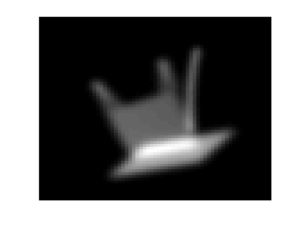Recent Paper:
Roy R. Lederman, Joakim Andén, Amit Singer. Hyper-molecules: on the representation and recovery of dynamical structures for applications in flexible macro-molecules in cryo-EM
Recent recorded talks:
NYC Computational Cryo-EM Summer Workshop, August 2019
Computational Harmonic Analysis and Data Science, October 2019
Preliminary Results
Some recent results with real cryo-EM data.
Scans over the state space (state indicated at the title). The “jumps” indicate a change in the threshold that determines the level-set which is shown.
eIF2B. Preliminary Results. Work with Joakim Anden. Acknowledgement: Adam Frost, Lakshmi Miller-Vedam
eIF2B. Preliminary Results, second state range. Work with Joakim Anden. Acknowledgement: Adam Frost, Lakshmi Miller-Vedam
We have made progress since the “cat” below, but there’s more work to be done. Coming soon: complex features of hyper-molecules and algorithms for recovering hyper-molecules.
Mapping of Continuously Heterogeneous Volumes Using Hyper-Molecules
This work generalizes the problem of reconstructing a molecule to the problem of reconstructing a “hyper-molecule” which is a higher dimensional objects that describe the variability of the molecule. See this report.
The idea is implemented in the following prototype and applied to simulated data.
True Model
The ground truth, a continuously heterogeneous “molecule” (represented in this simulation by a “cat”). Each value of “t” in the title represents a different state in the continuum of states in which the molecule can be found. The following video shows the object morphs between states and spun around.
Ground truth model
Measurements
The measurements are images, each image is a projection of one unknown state of the molecule in an unknown direction, with high levels of noise. In this simulation we are given 50,000 such images, each of 65×65 pixels. The SNR in this example is 1/16.


Figure: a clean projection image, and the same image with noise.
Reconstruction (preliminary results)
Reconstruction results, a heterogeneous object
The cat is not dancing, this is a nice example of alignment ambiguity in reconstruction, see this report.
New results coming soon…
Simultaneous Alignment and Classification
This project also treats heterogeneity, but in a different approach. This work is a representation theory approach to simultaneous alignment and classification, with applications in the heterogeneity problem in cryo-EM.
We generalize multireference alignment and non unique games (optimization over compact groups with pairwise cost functions) to the case of alignment and classification, which can be written as the product of compact groups.
While the classification x alignment ideas here and the mapping/reconstruction ideas above have some similar motivations, they apply to very different approaches to the cryo-EM problem.
Talk about the NUG approach to simultaneous alignment and classification: Banff 2017.
A single-pass approach to heterogeneity
Another approach to heterogeneity in multireference alignment that requires only a single pass on the large number of samples is presented in Heterogeneous multireference alignment: a single pass approach .
Representation of 3-D objects
Molecules are often modeled using functions that are highly concentrated in both the spatial domain and the frequency domain. The optimal basis for representing such object are Prolate Spheroidal Functions.
We discuss the numerical computation of such functions in this paper; code is available at this paper.
